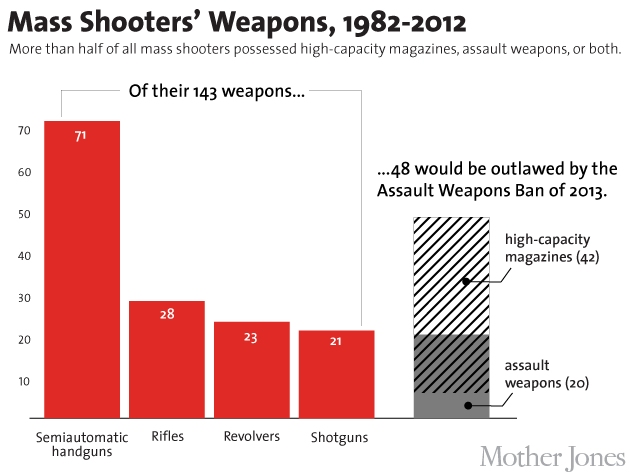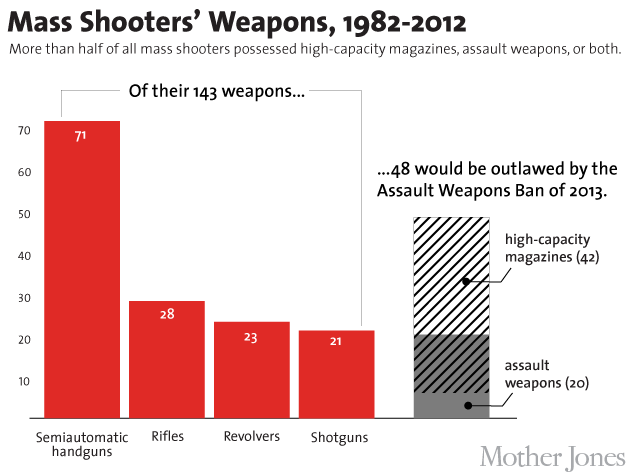
A surveillance photo of Zawahri entering the Santa Monica College library.Santa Monica Police/ZUMA
Update, June 12, 9:25 p.m. PDT: Citing unnamed law enforcement officials, the Los Angeles Times reported late Wednesday that the semiautomatic rifle used in the Santa Monica rampage appears to have been assembled from various parts, possibly to circumvent California’s laws prohibiting such weapons. Whether the killer built the weapon himself or obtained it whole is unclear. The rifle “appeared to be modified so that it could fire more rounds,” according to the LA Times. In fact, it’s relatively easy to make your own assault rifle, as reporter Bryan Schatz demonstrated recently while investigating a “build party”—in southern California—for this Mother Jones story.
More details have emerged about John Zawahri, who murdered five people and wounded several others in a gun rampage on Friday before police shot him dead on the campus of Santa Monica College. He is the kind of mass killer we’ve come to see all too often in recent years, from his gender and age to the type of weapons he used to his mental-health history. With our in-depth investigation of 62 mass shootings over the last 30 years we identified strong patterns among the killers, and Zawahri fits several of them:
Shooter’s identity: Zawahri, an American-born son of Lebanese immigrants, was an adult male, age 23. All but one of the killers in the cases we analyzed were male, most of them young adult to middle-age.
Weapons used: Zawahri committed the killings using an AR-15-style semi-automatic rifle and high-capacity magazines. According to the LA Times, investigators say he carried nearly 40 magazines capable of holding 30 bullets each. Some were in a duffel bag along with a handgun; he also wore ammunition strapped to his chest and thighs. Zawahri fired about 100 rounds during an approximately 15-minute rampage and was carrying more than 1,000 rounds with him, according to law enforcement officials. As our study showed, more than half of all mass shooters had assault weapons and high-capacity magazines, and many were armed with multiple guns:

The data we gathered also shows that most mass shooters—nearly 80 percent of them—obtained their weapons legally. We don’t yet know how Zawahri got his guns; law enforcement officials say they’re in the process of tracing them. But it’s possible he obtained them using the internet: As early as 2006, according to the LA Times, word had spread among Zawahri’s high school classmates and teachers that he’d spent time surfing for assault weapons online. It remains very easy to buy guns on the internet, a key issue addressed by the legislation mandating broader background checks that died in the Senate in April.
Mental-health problems: Zawahri had shown troubling signs years ago, according to the LA Times. In 2006, a teacher learned of Zawahri’s interest in assault weapons—as well as violent threats he’d voiced about specific classmates—and reported Zawahri to school authorities, who informed the police. Soon after, Zawahri was admitted to UCLA’s psychiatric ward for a brief period. In the 62 cases we studied, a majority of the killers had mental health problems, with many showing signs of it prior to their attacks.
There’s another pattern that Zawahri fits: Like the young male killers in Newtown, Aurora, and Columbine before him, he was apparently into video games. According to the LA Times, his school transcripts show that he was “sporadically” enrolled in an entertainment technology program in 2009 and 2010, taking courses in animation and video game development. But as Erik Kain cautions in an in-depth explainer on violent video games published on our site today, that fact may ultimately tell us nothing about what caused Zawahri to bring horror to Santa Monica late last week.
This post has been updated. Also see our full award–winning special report on mass shootings in America.
















